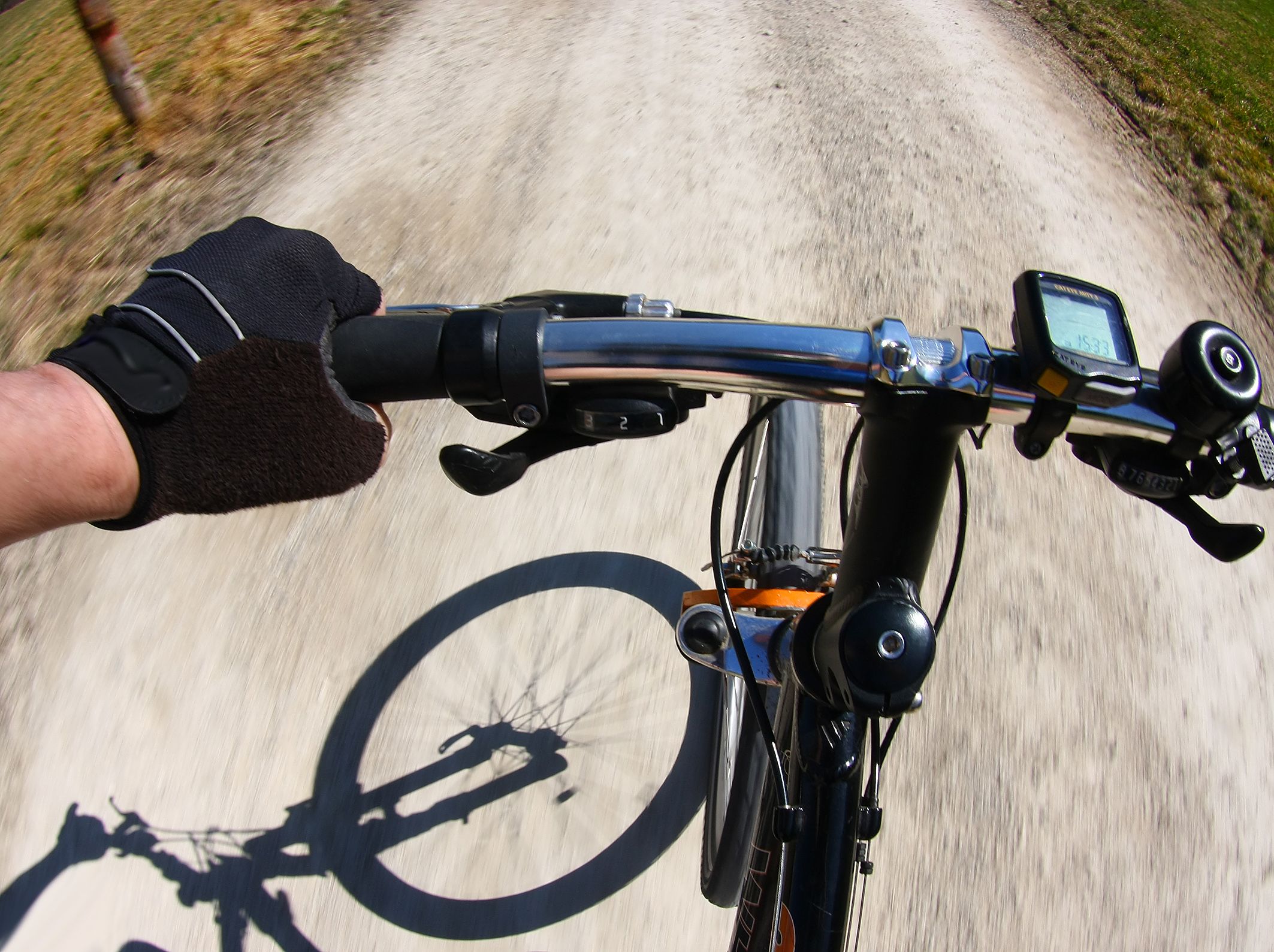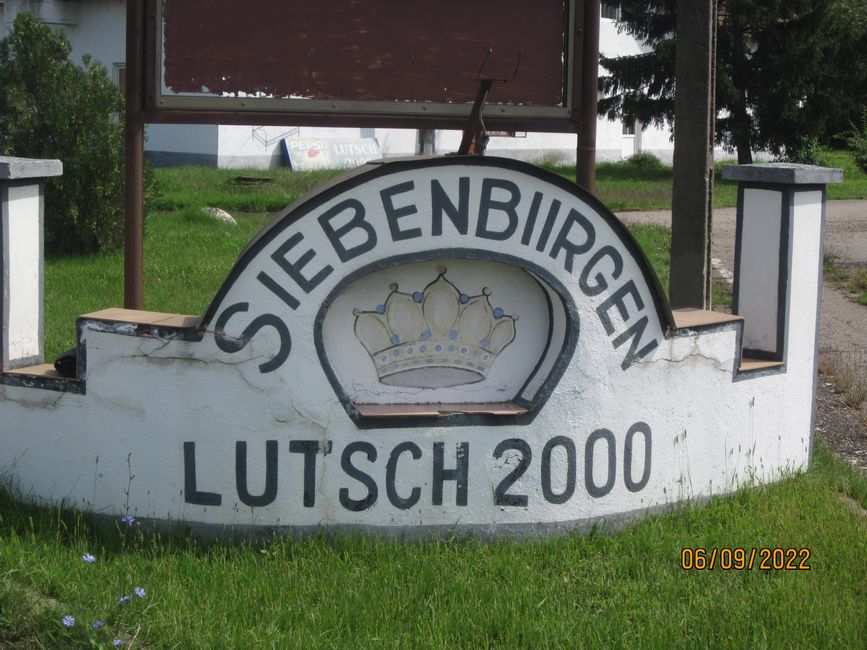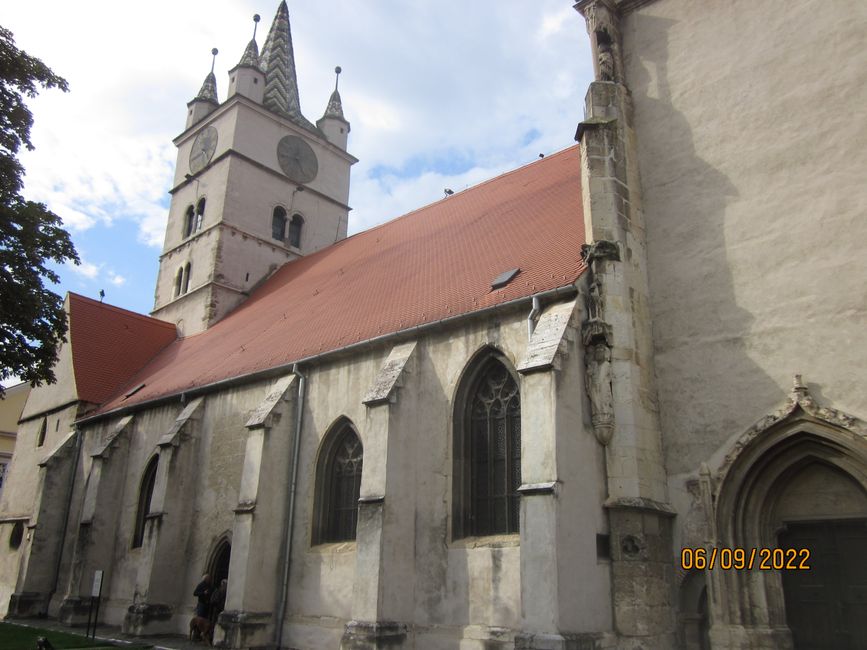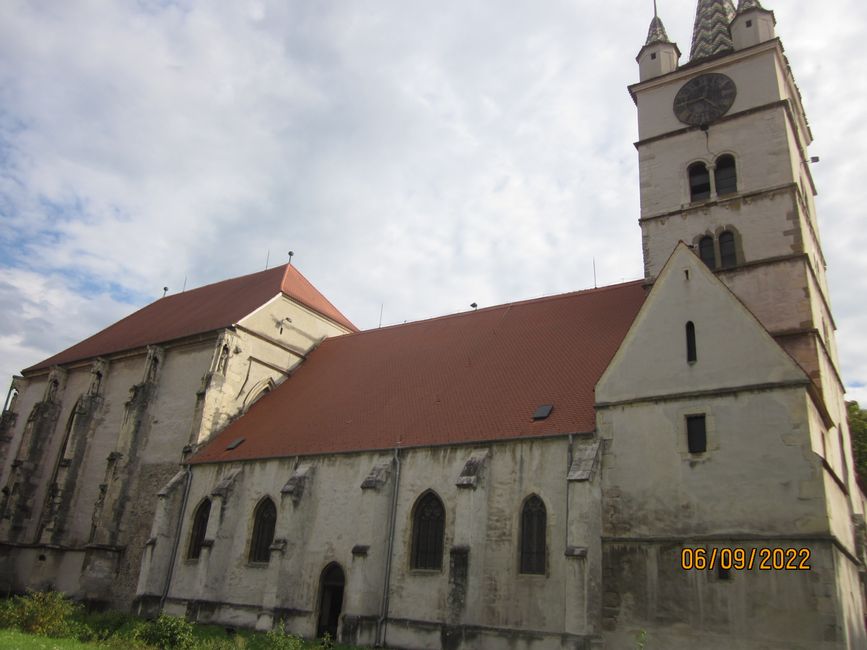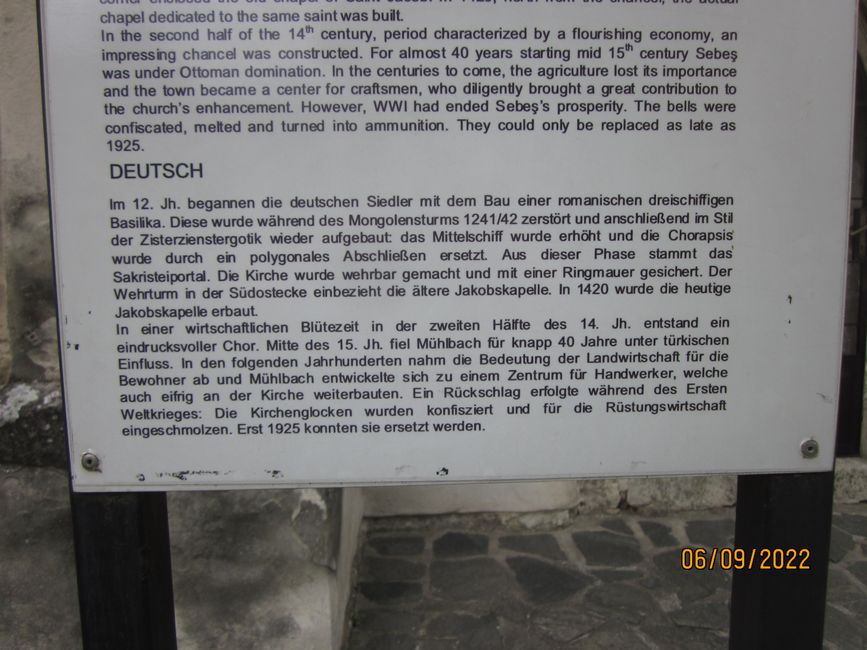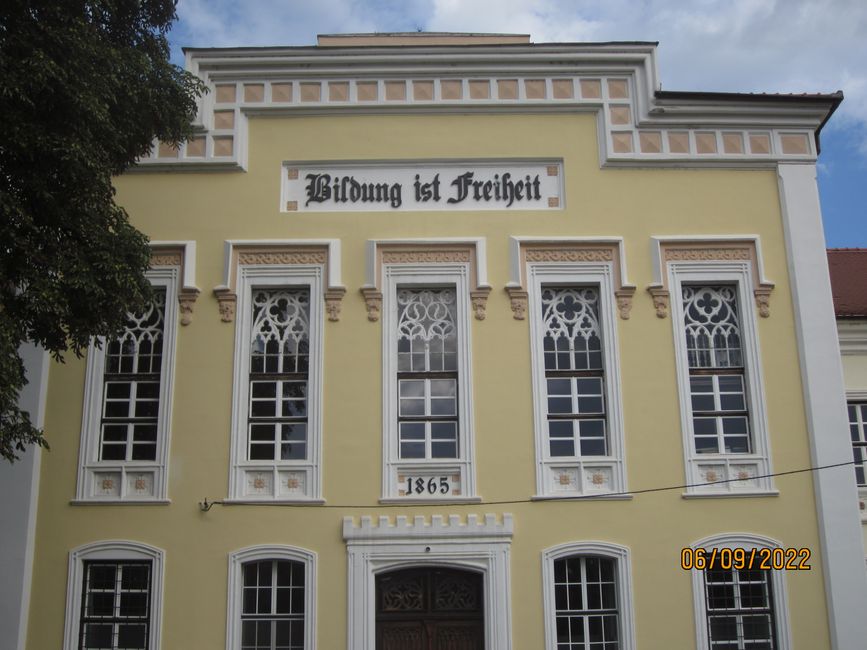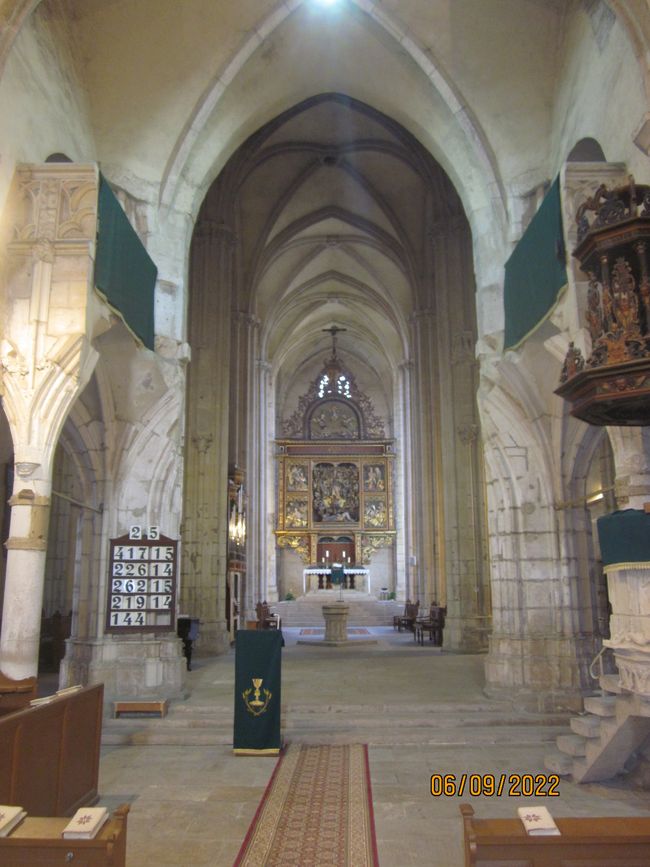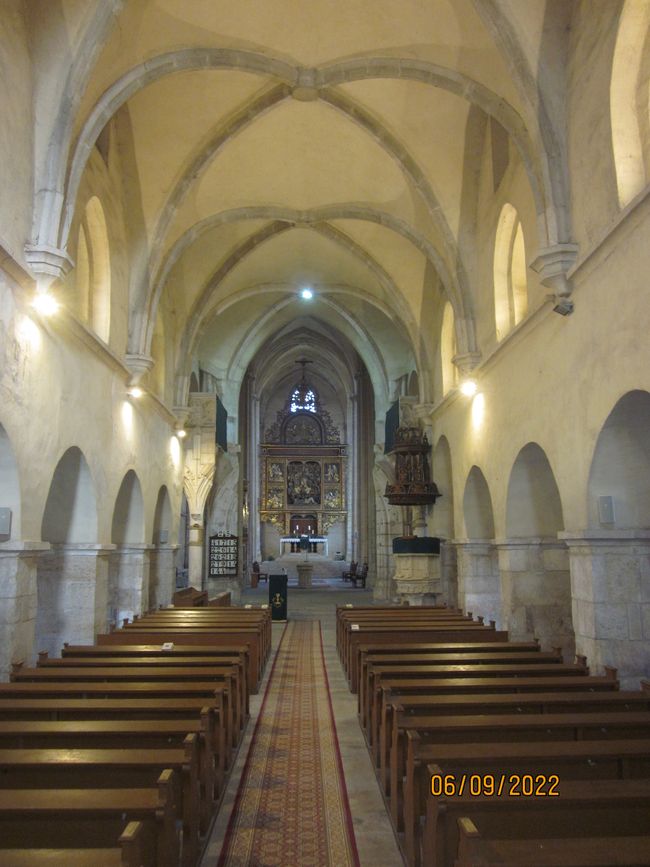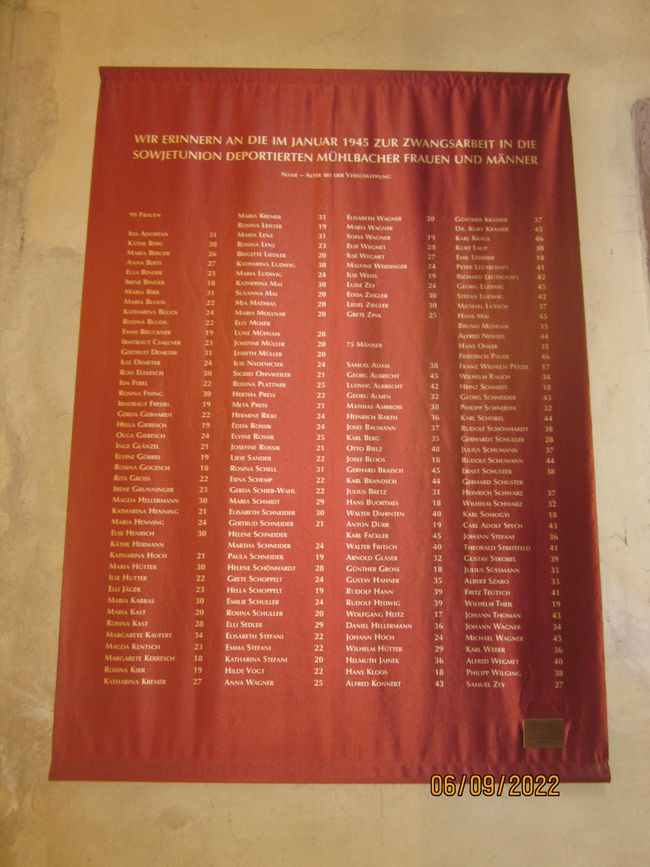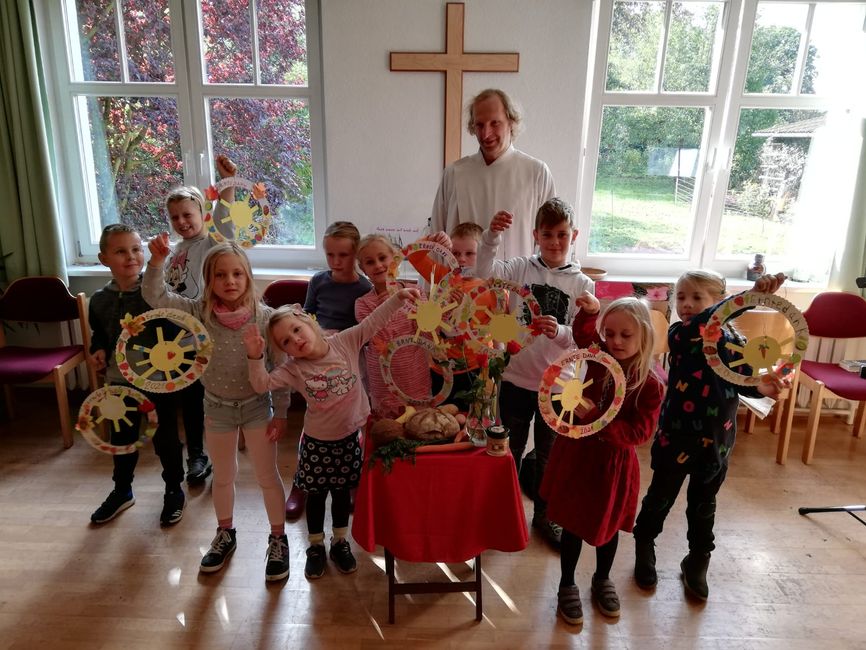
Go East - Mit dem Fahrrad zu Ev. Gemeinden in Osteuropa
vakantio.de/go-east-mit-dem-rad-zu-gemeinden-in-osteuropa
60th Day - Sept 6: Mühlbach / Sebes: Great Church with historical heritage
ที่ตีพิมพ์: 07.09.2022
สมัครรับจดหมายข่าว
After the historically very informative morning in Broos / Orastie, I set off around 11 a.m. I continued on the E 68 highway further into Transylvania. At a street intersection, I was greeted by a sign with the German inscription 'Transylvania'. On both sides of the highway, there are long mountain ranges that characterize the typical landscape of Transylvania. Shortly after 2 p.m., I arrived at the church in Mühlbach (German) or Sebes (Romanian), and I quickly found the parish office nearby. Pastor Alfred Dahinten greeted me warmly and led me to an apartment building owned by the Lutheran community but privately managed. We arranged to meet at 6 p.m., and in the meantime, I took a look at the small town and the historically interesting church. Some of the foundation walls date back to the 12th century. At that time, the first German settlers were settled in the area. In 1241, the city was devastated during the Mongol invasion and besieged by the Turks in 1438, and the city was plundered again. The church was rebuilt by the Germans, generously expanded with a large choir, and fortified with a defensive wall. It still shapes the cityscape of Sebes today, even though there are only a small number of German residents in the city.
A few decades after the Reformation, the city became Protestant, and the church was transformed into the Evangelical City Parish Church, and the German merchants shaped the city until modern times. After the major political change of 1990, the majority of Transylvanian Saxons left the city within a few years. They saw no future prospects for themselves in Romania.
Today - in the year 2022 - there are still around 180 evangelical church members in the city, and Pastor Dahinten is responsible for a total of around 280 members, including other congregations. There is a church service every Sunday. The liturgy is in German, and the sermon is also in Romanian. There is also a German school, but it is run by the state. Religious education is also offered there. Therefore, there is no children's or family service. These special offers, as we have known them for decades, did not exist even in the times when the Germans formed the majority in Mühlbach. The front façade also bears the German educational ethos 'Education is Freedom'. After the tour of the church, we met for a coffee, and Alfred revealed to me that he also plays in a band that also performs and provides entertainment at the Transylvanian Saxon meetings.
Then I went shopping for dinner and walked back to my accommodation. As I lay in bed, I briefly imagined the medieval city life around the church, as presented in some documentaries. Today, the city is influenced by Romanian culture. However, the city church reminds every resident of the time when it was determined by the German settlers.
สมัครรับจดหมายข่าว
คำตอบ
